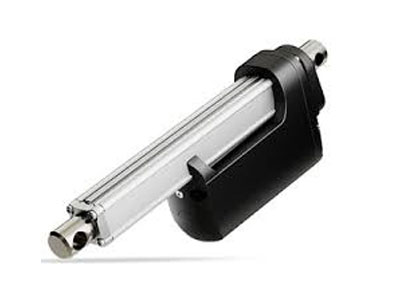Key Takeaway
The function of a rotary actuator is to provide controlled rotational movement in various applications. These actuators offer precise control and high torque output, making them ideal for tasks requiring rotational motion.
Understanding their function can help you choose the right actuator for your needs, ensuring efficient and reliable operation. Consider factors such as torque, speed, and environment when selecting a rotary actuator.
Key Functions in Industrial Settings
Rotary actuators play a critical role in many industrial settings due to their ability to provide precise rotational motion. One of the primary functions of a rotary actuator in industrial environments is controlling valves. Pneumatic or hydraulic rotary actuators are often used to turn valves, regulating the flow of fluids or gases through pipelines in industries such as oil and gas, water treatment, and chemical processing. The rotary motion enables these actuators to turn the valve stem, allowing for accurate adjustments to flow rates or pressure levels.
Another essential function of rotary actuators in industrial settings is their use in automated machinery. They are commonly found in robotic arms, conveyor systems, and packaging equipment, where they control the rotation of components to perform tasks such as picking, placing, rotating, or sorting items. In these applications, rotary actuators provide the necessary torque and precision to ensure smooth operation and improve efficiency, often reducing the need for manual intervention.
Rotary actuators are also crucial for positioning and orienting objects in manufacturing and assembly lines. In applications like CNC machines or automated assembly stations, rotary actuators can rotate workpieces to the desired orientation, ensuring that parts are properly aligned for the next step in the process. This function helps improve accuracy, reduce cycle times, and increase overall production efficiency in high-demand industrial environments.

Applications in Precision Machinery
Rotary actuators are essential in precision-driven industries like robotics, medical devices, and aerospace engineering.
Robotics: In robotic arms, actuators enable accurate and smooth movement for assembly, welding, and painting tasks.
Medical Equipment: They power surgical robots and diagnostic machines, requiring precision and reliability.
Aerospace: Rotary actuators control wing flaps and landing gears, ensuring stability during critical operations.
CNC Machines: These devices rely on actuators for positioning tools with micrometer-level accuracy.
Take a robotic arm in a car assembly plant: rotary actuators allow the arm to rotate seamlessly, positioning parts accurately for welding or assembly. Any deviation in motion can lead to errors or production delays.
Their adaptability to extreme conditions further underscores their value. Whether in high-pressure underwater pipelines or the harsh vacuum of space, rotary actuators deliver consistent performance.
Enhancing Efficiency in Automated Processes
Automation thrives on efficiency, and rotary actuators are key enablers of this efficiency across industries.
Energy Efficiency: Actuators optimize energy usage by delivering motion only when needed, reducing waste.
Speed Control: They regulate rotational speeds in assembly lines, synchronizing with production demands.
Error Reduction: Precision in motion control minimizes errors in repetitive tasks like packaging and labeling.
Load Handling: From lifting heavy loads to delicate positioning, actuators handle varied demands with ease.
Consider a packaging plant where rotary actuators drive conveyor belts, label applicators, and sealing machines. These actuators ensure that every product is processed accurately and efficiently, reducing bottlenecks and downtime.
Their role extends to material handling, where actuators move parts or raw materials between workstations. This seamless flow improves productivity and ensures consistency across operations.
Integration with Control Systems
Rotary actuators work in tandem with control systems to deliver unmatched precision and adaptability.
Feedback Mechanisms: Integrated sensors provide real-time data on position, torque, and speed, ensuring smooth operations.
Programmable Logic Controllers (PLCs): These controllers communicate with actuators to execute complex motion sequences in automation.
Dynamic Adjustments: Control systems adjust actuator behavior based on input data, such as load changes or external conditions.
Remote Operation: Advanced systems enable remote monitoring and operation, enhancing flexibility.
In a smart manufacturing setup, rotary actuators, combined with IoT-enabled control systems, monitor performance and adjust parameters to maintain peak efficiency. This integration is particularly valuable in industries requiring rapid changeovers, such as electronics manufacturing.
Innovations in Rotary Actuator Design
Modern rotary actuators incorporate innovations that enhance their performance and adaptability.
Smart Actuators: These come with built-in sensors and connectivity features for IoT integration, enabling predictive maintenance.
Energy Efficiency: Advanced designs reduce power consumption, aligning with sustainability goals.
Miniaturization: Compact actuators cater to industries like medical devices, where space is limited.
Material Advancements: Lightweight yet durable materials improve performance and longevity.
Take magnetic rotary actuators as an example. They use magnetic fields instead of traditional gears, offering frictionless operation and greater precision. Such advancements are transforming sectors like robotics and automotive manufacturing.
Another breakthrough is the development of self-lubricating actuators, which reduce maintenance needs while enhancing reliability.
Conclusion
The function of a rotary actuator is to provide controlled rotational movement in various applications. These actuators offer precise control and high torque output, making them ideal for tasks requiring rotational motion.
By understanding their function and benefits, users can effectively integrate rotary actuators into their systems, ensuring optimal performance and efficiency in their processes.
